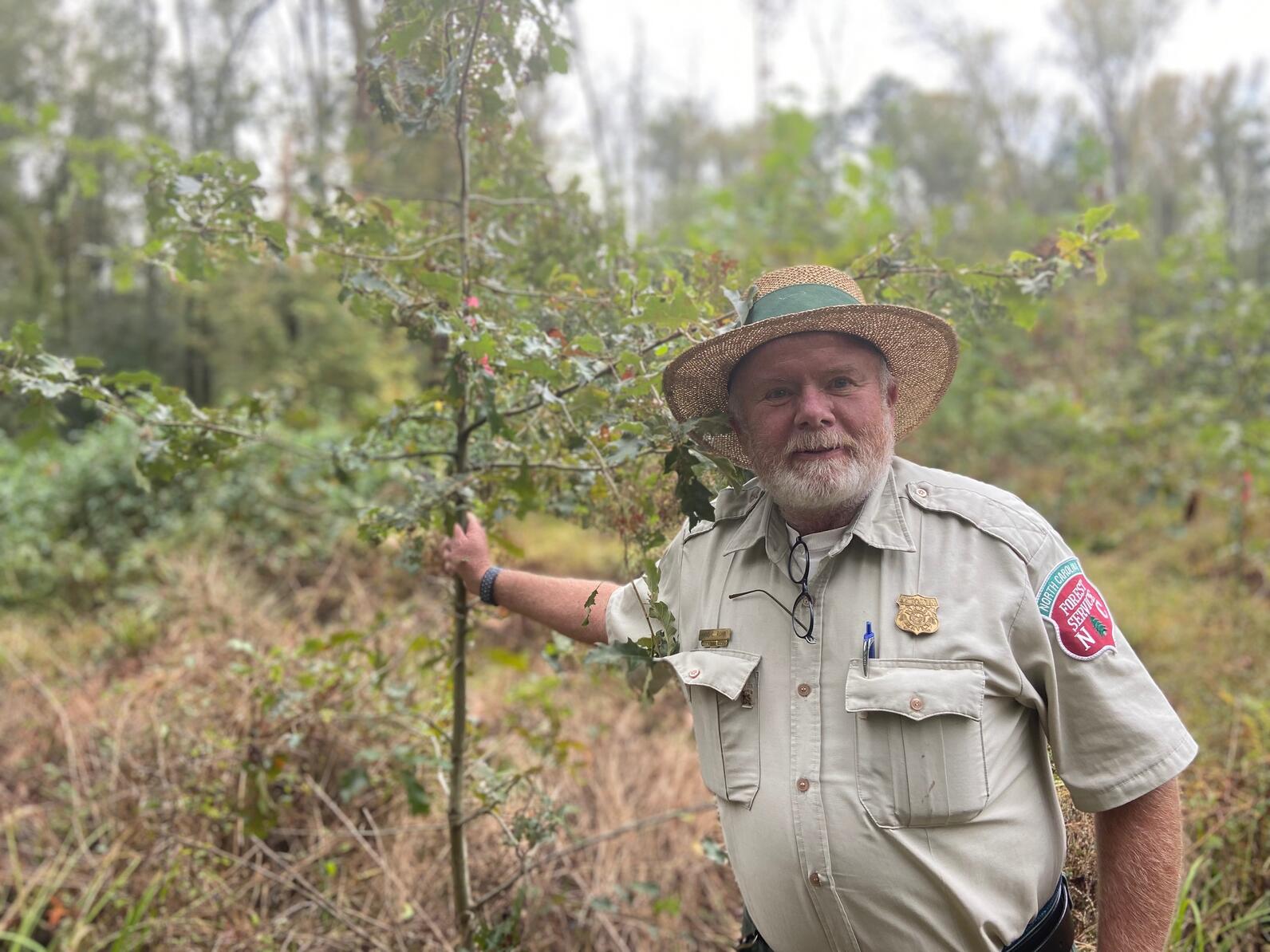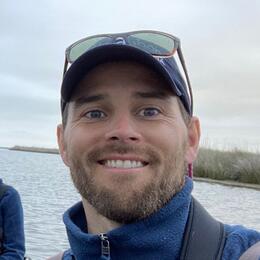A bottomland hardwood forest doesn’t always look like a forest. Sometimes it looks like a swamp, with murky water lapping against the trunks of oaks and giant cypress trees. At other times of year, the water is gone. Leaf litter covers the ground, and the forest might look like any old stretch of woods.
It is this ever-changing nature that makes bottomland hardwood forests unique. The soil filters nutrients, improving water quality and soaking up flood water, while the trees provide vital habitat for birds like Prothonotary Warblers, which breed almost exclusively in wet bottomlands and like to nest in the cavities of cypress knees. The combination of their bright yellow color and preferred habitat has earned the bird the nickname “swamp candle.”
“It’s always a delight to catch a glimpse of these bright yellow birds in a quiet, gray forest,” said Aimee Tomcho, conservation biologist at Audubon North Carolina. “The Prothonotary Warbler’s dependence on this ecosystem is obvious, but people often overlook just how important the forests are for people too, especially in flood-prone areas like eastern North Carolina.”

The dual benefits of this ecosystem for people and wildlife was one of the key messages delivered by biologists and foresters at a special workshop for landowners in October.
Tomcho organized the workshop series with these landowners in mind, with help from partners at the Forest Stewards Guild, The Nature Conservancy, the North Carolina Forest Service, Quail Forever, and the National Fish and Wildlife Foundation.
Historically, bottomland hardwood forests covered more than 30 million acres of the South and Midwest, but a century of logging reduced that amount by more than half.
North Carolina remains a stronghold for these forests, but the tracts are smaller and mostly under private ownership. Working with private landowners is key to the future of these habitats, but because the forests are fragmented and found in smaller tracts, people are generally less familiar with how to manage them, says Dakota Wagner, southeast region coordinator at the Forest Stewards Guild.
Landowners are often told they have two options: clear cut or leave the forest alone. When a family needs to earn an income from their land, they often choose the former. “This program is about finding something in between,” Wagner said.
Workshop participants gathered at Bladen Lakes State Forest in Bladen County on a warm morning in October to get a first-hand look at how wildlife-friendly management can work.
At the first stop, Jeff Marcus, a scientist with The Nature Conservancy, stood in the middle of a small clearing, surrounded by hip-level brambles, grasses, and young trees.

“These grasses, this shrub cover, this is what gets you more wildlife,” Marcus told the group. Even birds that thrive in large tracts of forest use woodland openings to find food or nest, he said.
Openings in the canopy let sunlight reach the ground, stimulating the growth of shrubs and mid-canopy trees that produce berries and are hosts to insects. Planting native shrubs and trees in the newly cleared ground helps keep invasive species at bay and promotes the kind of growth that supports wildlife, Marcus added. In this clearing, crews had already planted cherrybark oak saplings.
By selectively harvesting timber and creating smaller gaps in the forest, and then managing the cleared land with wildlife in mind, landowners can have it both ways—they can earn an income and sustain the forest.
This kind of bird-friendly management will be critical for the future of species like Prothonotary Warblers, Tomcho said. A quarter of the entire breeding population nests in the coastal plain of the Carolinas.
“If we lose the forests, we lose the birds, in addition to all the flood protection and water filtering capabilities of the habitat,” Tomcho said.
The Ivory-billed Woodpecker serves as an important example. The U.S. Fish and Wildlife Service declared the species officially extinct earlier this year, after a century of decline to its primary habitat—bottomland hardwood forests.
But Tomcho says the future doesn’t have to be so dire for other species that depend on these forests, like Wood Storks, Swallow-tailed Kites, and Anhinga. “This workshop was a reminder of the enthusiasm that’s out there for wildlife-friendly forest management,” she said. “More and more landowners want to find ways to steward their land and help wildlife at the same time.”








